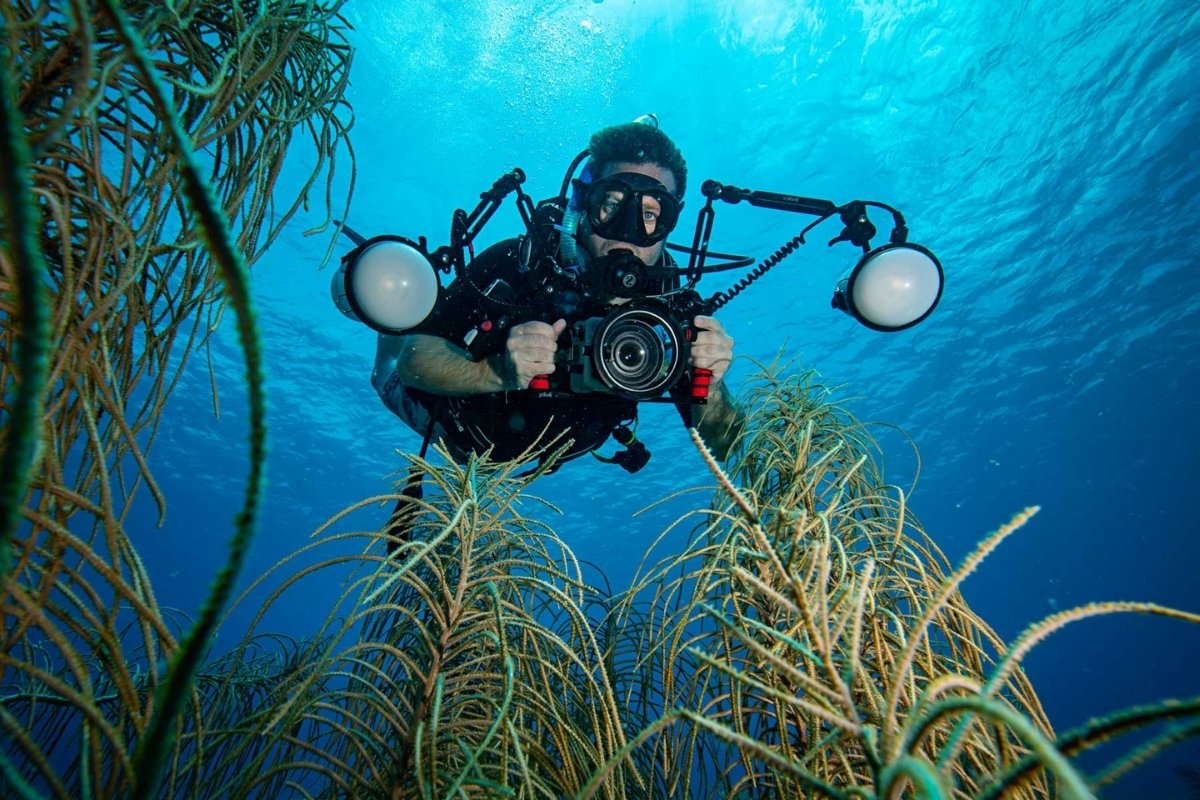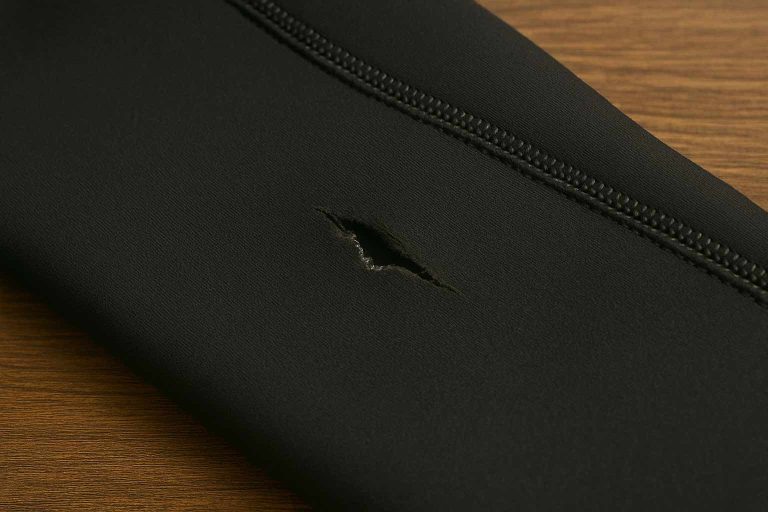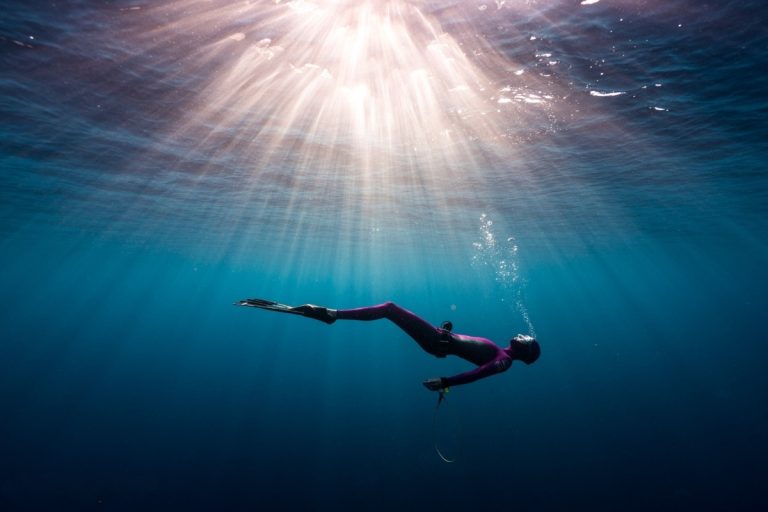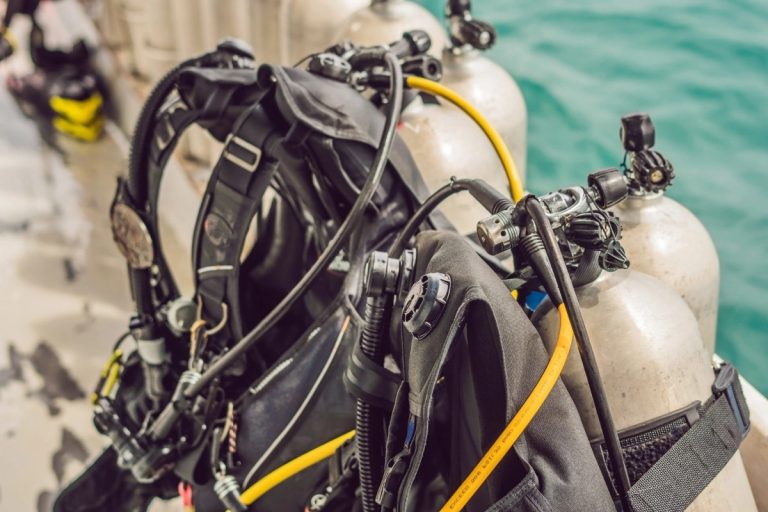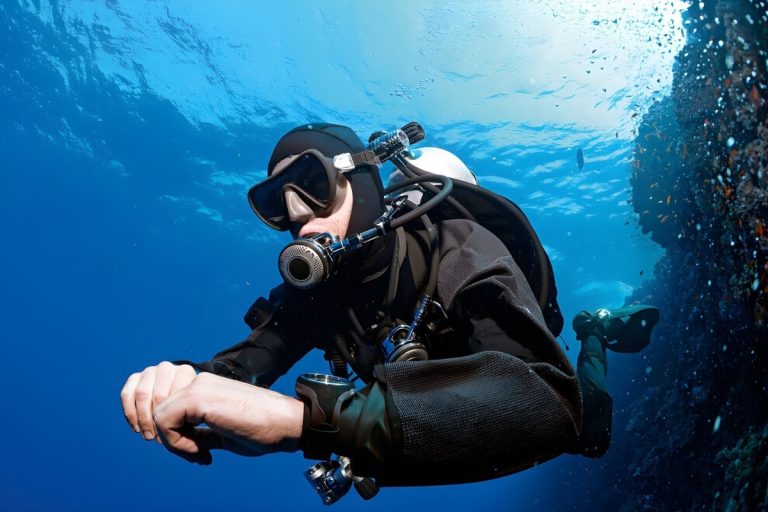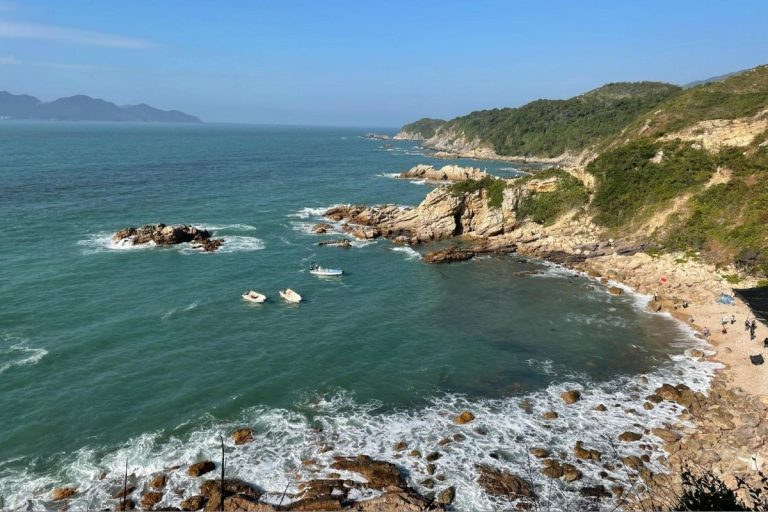Understanding Your Experience Level
Before diving into the technical specifications and features of underwater camera housings, it’s crucial to take an honest look at where you stand as a photographer. Your skill level directly influences not just what equipment you need, but also how much you should invest and what features will actually benefit your photography journey.
When assessing your experience level, consider both your general photography background and your specific underwater shooting experience. A seasoned landscape photographer might be a complete beginner when it comes to managing buoyancy while composing shots, while someone comfortable in the water might struggle with camera settings. This honest self-assessment will guide you toward equipment that matches your current abilities while leaving room for growth.
The underwater photography community is incredibly welcoming, and most photographers are happy to share their experiences with different housing systems. Don’t hesitate to reach out to local dive shops, photography clubs, or online forums where you can get real-world feedback about various housing options from people who’ve actually used them in challenging conditions.
Beginner Photographers
If you’re new to underwater photography, your primary focus should be on learning the fundamentals without being overwhelmed by complex equipment. A quality compact camera housing offers the perfect entry point, providing automatic settings that handle most technical decisions while you concentrate on composition, buoyancy control, and understanding how light behaves underwater.
Look for housings with clearly labeled, easy-to-operate controls that you can manage even while wearing thick gloves. Many beginner-friendly housings feature simplified control layouts that mirror the most essential camera functions without cluttering the interface with advanced options you’re not ready to use yet.
Enthusiast Photographers
As an enthusiast, you’ve likely mastered basic photography principles and are ready to take more creative control over your images. This is where you’ll want a housing that provides access to manual settings, allowing you to adjust aperture, shutter speed, and ISO based on the specific conditions you encounter underwater.
Consider housings that offer good ergonomics for frequently used controls, as you’ll be making adjustments more often than a beginner would. The ability to access custom function buttons and menu systems becomes increasingly important as you develop your own shooting style and preferences.
Professional Photographers
Professional underwater photographers need housings that can withstand heavy use while providing complete access to all camera functions. Reliability becomes paramount when you’re working with clients or trying to capture once-in-a-lifetime shots during expensive dive trips.
Look for housings with proven track records in professional use, robust construction that can handle repeated pressure cycles, and comprehensive control access that doesn’t compromise your creative vision. The investment in a high-quality professional housing pays for itself through reliability and the confidence it provides in critical shooting situations.
Defining Your Photography Goals
Your photography goals should drive every equipment decision you make, from the camera body you choose to the specific housing features you prioritize. Take time to honestly evaluate what you want to achieve with your underwater photography, both in the immediate future and as your skills develop over time.
Consider the types of subjects that excite you most. Are you drawn to the intimate details of small reef creatures, or do you prefer capturing the grand scale of underwater landscapes? Your subject preferences will significantly influence the housing features and accessories you’ll need to achieve your vision.
Think about how you plan to use your images. Will they primarily live on social media, or do you have aspirations for print sales, stock photography, or publication? Different end uses have different technical requirements that should influence your housing selection from the beginning.
Personal vs. Professional Use
Personal underwater photography allows for more experimentation and learning-focused equipment choices. You can prioritize features that help you grow as a photographer, even if they’re not the most efficient for professional work. This might mean choosing a housing with excellent educational resources or one that grows with your skills over time.
Professional use demands reliability, efficiency, and results consistency. Every piece of equipment needs to perform flawlessly under pressure, literally and figuratively. Professional housings often feature redundant sealing systems, more robust construction, and faster access to critical controls that can make the difference between getting the shot and missing it.
Types of Underwater Photography
Wide-angle underwater photography captures the grandeur of underwater scenes, from coral reefs to large marine life. This style typically requires dome ports that maintain the lens’s field of view underwater and housings that can accommodate larger lens systems while remaining manageable underwater.
Macro photography focuses on small subjects and fine details, requiring flat ports that maintain optical quality for close-focusing lenses. The housing needs precise control access for fine adjustments to focus and exposure, as macro work often demands careful manual control over camera settings.
Long-term vs. Short-term Goals
Short-term goals might focus on learning basic underwater photography skills or capturing memories from upcoming dive trips. This approach might favor more affordable, user-friendly housing options that provide immediate satisfaction without a massive learning curve or financial investment.
Long-term goals require thinking about how your needs will evolve as your skills develop. Investing in a housing system that can grow with you might cost more initially but provides better value over time as you add accessories, upgrade cameras, or expand into new photography styles.
Budget Considerations
Underwater camera housing systems represent a significant investment, and understanding the different price tiers helps you make informed decisions about where to allocate your budget for maximum impact. The key is finding the sweet spot between your current needs, future aspirations, and financial reality.
Remember that the housing is just one part of your total system cost. Factor in accessories like strobes, arms, clamps, and maintenance supplies when calculating your total investment. A seemingly affordable housing might require expensive accessories to achieve the results you want.
Consider the total cost of ownership over time, including maintenance, replacement parts, and potential upgrades. Sometimes spending more initially on a higher-quality housing saves money in the long run through better durability and lower maintenance costs.
Entry-Level Setups ($500-$1,000)
Entry-level housing systems typically pair compact cameras with manufacturer-made housings or well-regarded third-party options. These systems prioritize ease of use and basic functionality over advanced features, making them perfect for photographers who want to test the waters of underwater photography without a massive commitment.
At this price point, you’ll find housings with good depth ratings for recreational diving, basic control access for essential camera functions, and reasonable build quality that can handle normal recreational use. While they may lack some advanced features, these systems can produce excellent results in the right hands.
Mid-Range Options ($1,000-$5,000)
Mid-range systems open up significantly more possibilities, including entry-level DSLR and mirrorless camera housings with more comprehensive control access. This price range often represents the best value for serious enthusiasts who want professional-quality results without the full professional price tag.
These housings typically feature better ergonomics, more durable construction, and access to a wider range of accessories. You’ll also find better customer support and more extensive documentation, which becomes increasingly important as system complexity grows.
High-End Systems (Over $5,000)
High-end housing systems are built for professional use and serious enthusiasts who demand the absolute best performance and reliability. These systems feature the most advanced materials, precision manufacturing, and comprehensive control access that leaves nothing to chance.
The investment at this level includes not just the housing itself but often a complete ecosystem of accessories, support, and upgrade paths that can serve a photographer for many years. While the initial cost is substantial, the per-dive cost over a long career can actually be quite reasonable.
Comparing Camera Types
The choice between compact cameras and larger DSLR or mirrorless systems fundamentally shapes your entire underwater photography experience. Each approach has distinct advantages and limitations that align better with different photography styles, experience levels, and practical considerations.
Understanding these differences helps you make an informed decision that matches your current needs while considering how those needs might evolve. There’s no universally “best” choice, only the best choice for your specific situation and goals.
Consider not just the camera and housing, but the entire system including strobes, arms, and accessories. A compact system might seem more affordable initially, but adding professional-level lighting and accessories can narrow the cost gap with larger systems significantly.
Advantages of Compact Cameras
Compact camera systems excel in portability and ease of use, making them ideal for travel photographers who need to pack light or beginners who want to focus on composition rather than technical complexity. The smaller size makes them more manageable underwater, especially for photographers still developing their buoyancy skills.
Modern compact cameras offer impressive image quality that rivals larger systems in many situations. Their built-in lenses are often specifically designed for underwater use, and the smaller sensor can actually be advantageous for macro photography, providing greater depth of field that keeps more of small subjects in focus.
Limitations of Compact Cameras
The main limitations of compact systems revolve around flexibility and ultimate image quality. Fixed lenses limit your creative options compared to interchangeable lens systems, and smaller sensors generally produce more noise at higher ISO settings, which can be problematic in low-light underwater conditions.
Manual control access can be limited on compact systems, making it harder to achieve specific creative effects or adapt to unusual lighting conditions. While automatic modes work well in many situations, they can struggle with the unique challenges of underwater photography.
Advantages of DSLR/Mirrorless Cameras
Larger camera systems provide unmatched flexibility through interchangeable lenses, allowing you to optimize your setup for specific subjects or shooting conditions. The larger sensors typically produce better image quality, especially in challenging lighting conditions common underwater.
These systems offer comprehensive manual control access, allowing experienced photographers to fine-tune every aspect of their exposure and creative vision. The availability of professional-grade accessories and lighting systems makes them the preferred choice for serious underwater photographers.
Limitations of DSLR/Mirrorless Cameras
The primary drawbacks of larger systems are size, weight, and complexity. Underwater housings for these cameras are significantly larger and heavier, making travel more challenging and requiring better buoyancy skills to manage underwater effectively.
The learning curve is steeper, both for the camera controls and the housing operation. The increased complexity means more things can potentially go wrong, and the higher investment makes mistakes more costly.
Key Features to Consider
When evaluating underwater camera housings, certain features have outsized impacts on your photography success and overall experience. Understanding which features matter most for your specific needs helps you prioritize your investment and avoid paying for capabilities you won’t use.
Consider how each feature aligns with your photography goals and shooting style. A feature that’s essential for one type of underwater photography might be completely irrelevant for another, so focus on what matters for your intended use.
Think about the underwater conditions you’ll most commonly encounter. Features that seem important in theory might be less relevant if they don’t match your typical diving environments and subjects.
Image Quality
Image quality in underwater photography depends on several factors beyond just the camera sensor. The housing’s optical design, particularly the lens port, plays a crucial role in maintaining the lens’s optical performance underwater.
Look for housings that maintain the lens’s full optical quality without introducing distortions or reducing sharpness. High-quality lens ports for optical quality are essential for achieving professional results, especially with high-resolution modern cameras that can reveal any optical compromises.
Manual Controls
Access to manual camera controls becomes increasingly important as your skills develop. Even if you primarily shoot in automatic modes now, having the option to take manual control when needed can make the difference between getting a shot and missing it.
Consider which controls you’re most likely to need quick access to underwater. Aperture, shutter speed, and ISO are typically the most critical, but access to focus modes, drive modes, and exposure compensation can also be valuable.
Lens Options
For interchangeable lens systems, consider both your current lens collection and potential future additions. A housing system that can accommodate multiple lenses through different ports and accessories provides more long-term value than one that locks you into a single lens choice.
Research the availability and cost of different lens ports and accessories for the housing systems you’re considering. Some manufacturers offer extensive accessory lines, while others have more limited options that might restrict your creative growth.
Autofocus Capabilities
Underwater autofocus performance depends on both the camera’s capabilities and the housing’s design. Look for housings that provide full access to autofocus controls and don’t interfere with the camera’s autofocus system operation.
Consider whether the housing allows access to autofocus customization features like focus point selection, tracking modes, and focus limiter switches. These features become increasingly important for challenging subjects like fast-moving fish or macro subjects with shallow depth of field.
Choosing the Right Housing
The housing selection process requires balancing multiple factors including compatibility, durability, functionality, and budget. This decision will impact every aspect of your underwater photography experience, from day-to-day usability to long-term satisfaction with your investment.
Research the reputation and track record of different housing manufacturers. Some companies have decades of experience and proven reliability, while others might offer innovative features but less established support networks. When investing in high-quality underwater housings, manufacturer reputation and support can be just as important as the housing features themselves.
Consider the availability of accessories, replacement parts, and service support in your area. A housing with limited accessory options or poor service support can become frustrating over time, regardless of its initial appeal.
Compatibility with Camera Models
Housing compatibility extends beyond just fitting your current camera body. Consider whether the housing can accommodate different camera models within the same system, providing upgrade flexibility without requiring a complete housing replacement.
Some housing manufacturers offer trade-in programs or upgrade paths when new camera models are released. This can provide significant value over time, especially for photographers who like to stay current with the latest camera technology.
Material and Durability
Housing materials significantly impact both durability and performance. Aluminum housings offer excellent strength and corrosion resistance but add weight, while high-quality plastics can provide good performance at lower weight and cost.
Consider the typical conditions you’ll encounter and how they might affect different materials. Tropical diving might favor corrosion-resistant materials, while cold-water diving might require materials that maintain flexibility and sealing performance in low temperatures.
Depth Rating Considerations
Choose a housing with a depth rating that exceeds your maximum planned diving depths by a comfortable margin. Even if you primarily dive in shallow water, having extra depth capability provides peace of mind and resale value.
Remember that depth ratings can be affected by housing age, maintenance history, and seal condition. A housing rated for 200 feet when new might not maintain that rating after years of use without proper maintenance and seal replacement.
Control Access and Ergonomics
Ergonomic design becomes critical when you’re wearing gloves, managing buoyancy, and trying to operate camera controls simultaneously. Test the housing ergonomics if possible, or research feedback from other photographers about control accessibility and operation.
Consider which camera controls you use most frequently and ensure the housing provides easy access to those functions. A housing that makes common adjustments difficult or awkward will negatively impact your photography experience and results.
Understanding Housing Components
Modern underwater camera housings are sophisticated systems with multiple components that work together to protect your camera while maintaining full functionality. Understanding these components helps you make informed decisions about accessories and ensures you get the most from your housing investment.
Each component serves specific purposes and understanding their functions helps you optimize your setup for different shooting situations. The modular nature of most housing systems means you can customize your configuration based on your specific needs and shooting style.
Quality varies significantly between different manufacturers and price points for housing components. Investing in high-quality components, especially those that affect optical performance, typically provides better long-term value than trying to save money on critical elements.
Lens Ports: Dome vs. Flat
Dome ports are essential for wide-angle underwater photography, as they restore the lens’s field of view that would otherwise be reduced by the water’s refractive index. The dome acts as an additional optical element, requiring careful design and manufacturing to maintain image quality.
Flat ports are used primarily for macro photography and longer focal length lenses where maintaining the lens’s original optical design is more important than field of view considerations. They’re simpler optically but require precise alignment and high-quality materials to avoid image degradation.
Extension Rings and Zoom Gear
Extension rings allow housings to accommodate different lens lengths and provide the proper spacing for optimal optical performance. They’re essential components for many lens and housing combinations, and their quality directly affects the final image quality.
Zoom gear systems enable underwater operation of zoom lenses, providing the mechanical connection between the housing’s external controls and the lens’s zoom ring. Smooth, precise operation is essential for maintaining composition while adjusting focal length underwater.
Diopters for Lens Adaptation
Diopter lenses can modify the optical characteristics of your lens and housing combination, allowing for closer focusing or field of view adjustments. They’re particularly useful for macro photography, where they can provide magnification beyond what the lens alone can achieve.
Quality diopters require precision manufacturing to avoid introducing optical aberrations or reducing image sharpness. They represent a cost-effective way to expand your lens’s capabilities without investing in additional lenses.
Maintenance and Planning
Proper maintenance and planning are essential for successful underwater photography and long housing life. Developing good habits from the beginning prevents problems and ensures your equipment performs reliably when you need it most.
Create a maintenance routine that includes pre-dive checks, post-dive care, and regular service intervals. Consistency in maintenance practices prevents small issues from becoming major problems and extends the life of your housing and seals.
Understanding vacuum systems for watertight seals represents a significant advancement in housing safety technology. These systems provide real-time monitoring of housing integrity, alerting you to potential leaks before they become catastrophic failures.
Importance of Regular Maintenance
Regular maintenance goes beyond simple rinsing and drying. It includes seal inspection and replacement, control lubrication, and systematic checks of all housing components. Establishing a maintenance schedule based on usage frequency helps ensure nothing is overlooked.
Keep detailed records of your maintenance activities, including seal replacement dates, service intervals, and any issues encountered. This information helps identify patterns and prevents problems before they occur.
Planning for Underwater Shoots
Successful underwater photography requires careful planning that goes beyond just camera settings. Consider tide conditions, water visibility, subject behavior, and safety factors when planning your shoots.
Prepare backup plans for different conditions and have alternative shooting strategies ready. Underwater conditions can change rapidly, and flexibility in your approach often makes the difference between a successful shoot and a disappointing day.
Utilizing Port Charts from Manufacturers
Port charts provide essential information about which accessories work with specific lens and housing combinations. These charts take the guesswork out of accessory selection and ensure optimal optical performance.
Study port charts carefully before purchasing accessories, and don’t assume that similar lenses will use the same accessories. Small differences in lens design can require different housing accessories for optimal performance.
Frequently Asked Questions
What should beginners look for in a camera housing?
Beginners should look for compact camera housings with automatic settings, easy-to-use controls, and a design that allows for basic functionality without overwhelming complexity.
How does experience level affect housing choices?
Your experience level impacts the features you need in a housing; beginners may prefer user-friendly options, while enthusiasts and professionals will benefit from manual control access and robust construction.
What are the budget ranges for underwater camera housing?
Entry-level setups typically range from $500 to $1,000, mid-range options from $1,000 to $5,000, and high-end systems start at over $5,000.
Why is maintenance important for underwater camera housings?
Regular maintenance is crucial for ensuring the longevity and reliability of your housing, including seal inspections, lubrication, and systematic checks to prevent leaks.
What features should I prioritize based on my photography goals?
Prioritize features that align with your photography style and goals, such as image quality, manual control access, and compatibility with specific lenses.
Navigating the Depths of Underwater Photography
Selecting the right housing for your camera is a pivotal step in your underwater photography journey. By carefully considering your experience level, photography goals, and budget, you can choose equipment that not only meets your current needs but also facilitates your growth as a photographer. Investing time in understanding the intricacies of housing components and maintenance will ensure you capture stunning underwater images for years to come.
